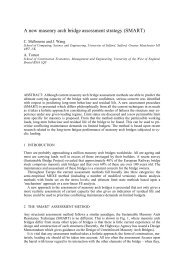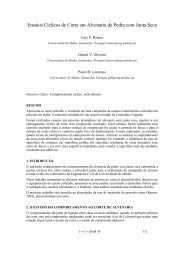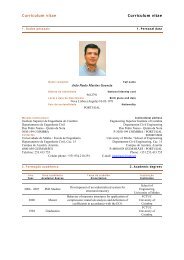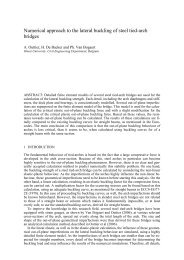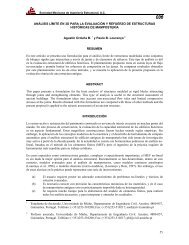Sustainable Construction A Life Cycle Approach in Engineering
Sustainable Construction A Life Cycle Approach in Engineering
Sustainable Construction A Life Cycle Approach in Engineering
You also want an ePaper? Increase the reach of your titles
YUMPU automatically turns print PDFs into web optimized ePapers that Google loves.
3.5 Configurations<br />
With<strong>in</strong> the matrix many comb<strong>in</strong>ations can be made between a structure group, a build<strong>in</strong>g layer<br />
and an <strong>in</strong>dicator. These comb<strong>in</strong>ations will be named configurations (figure 4). When pipes of a<br />
water distribution system are poured <strong>in</strong>to the concrete of a floor, the configuration of these<br />
pipes with the floors probably has a low score on the <strong>in</strong>dicator of <strong>in</strong>tegration, s<strong>in</strong>ce the pipes<br />
are unreachable when ma<strong>in</strong>tenance is necessary. When <strong>in</strong> an office build<strong>in</strong>g a workspace is<br />
created with only columns as structural elements <strong>in</strong> the floor-plan, the obstruction of the space<br />
usage between the vertical elements will yield a good score.<br />
Not every configuration <strong>in</strong> the matrix is possible. Besides many configuration have limited<br />
relevance. Space usage is a non-physical build<strong>in</strong>g layer and will not be able to technically<br />
<strong>in</strong>tegrate with the structure. Also the non load-bear<strong>in</strong>g walls cannot undergo obstruction of the<br />
structure s<strong>in</strong>ce they are elements spaced <strong>in</strong> between the structure.<br />
Figure 4: The 3D-matrix conta<strong>in</strong>s many cells with little pieces of <strong>in</strong>formation.<br />
Some of these configurations are crossed out due to its limited relevance.<br />
4 SURVEY<br />
To determ<strong>in</strong>e the scores on a global level a number of configurations have to be aggregated,<br />
br<strong>in</strong>g<strong>in</strong>g new problems along. As mentioned before different <strong>in</strong>dicators are important to<br />
different build<strong>in</strong>g layers, mean<strong>in</strong>g <strong>in</strong> every direction many different weigh<strong>in</strong>g factors are<br />
needed to obta<strong>in</strong> the global scores. F<strong>in</strong>d<strong>in</strong>g objective criteria for the weigh<strong>in</strong>g factors proves to<br />
be very difficult and often depends on the subjectivity of the observer. Personal perception and<br />
the context of the time have a large <strong>in</strong>fluence on the question of what is important.<br />
Interdependencies between the <strong>in</strong>dicators form a second problem. When a configuration is<br />
completely <strong>in</strong>tegrated, the connection and accessibility of this configuration will not score high<br />
either.<br />
For the latter problem Hoekman (2009) already <strong>in</strong>troduced the use of Fuzzy Logic (Zadeh,<br />
1965), a theory that enables one to quantify grammatical problems <strong>in</strong>to values that can be<br />
aggregated by a rule box. Complicated relations like the ones that occur <strong>in</strong> the matrix can be<br />
tied down.<br />
This study simplifies the demand for weigh<strong>in</strong>g factors <strong>in</strong> all directions. As a step towards these<br />
weigh<strong>in</strong>g factors a survey was held among experts to determ<strong>in</strong>e the key configurations <strong>in</strong> the<br />
matrix. The expert panel existed of 16 researchers, structural eng<strong>in</strong>eers and undergraduate<br />
students, experienced with<strong>in</strong> the subject. This panel was asked <strong>in</strong> a survey to estimate the<br />
importance of the different parameters. Though the population of the panel was fairly small, the<br />
correlation <strong>in</strong> answers was high. The survey results show a peak of importance around some<br />
groups of configurations (figure 5), but on the other hand the difference between the other<br />
configurations was too little to draw conclusions.<br />
145


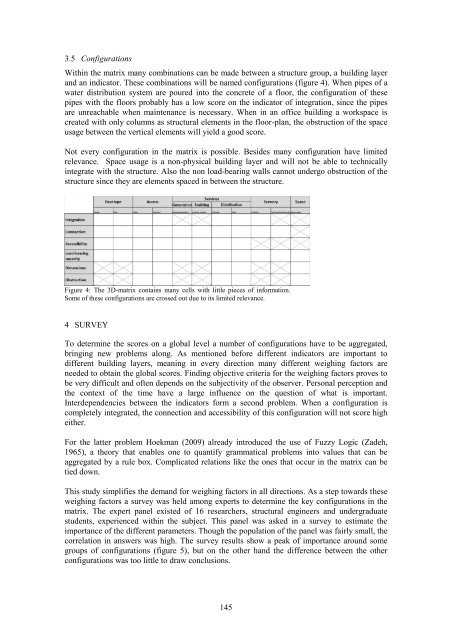
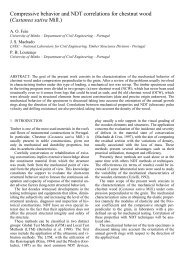
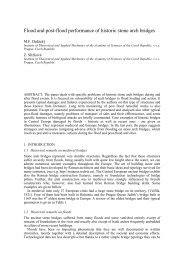
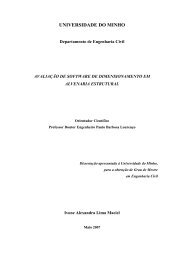
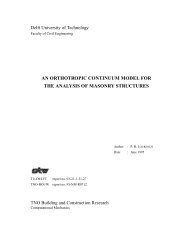

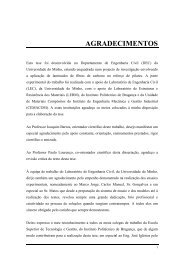

![Weibull [Compatibility Mode]](https://img.yumpu.com/48296360/1/190x134/weibull-compatibility-mode.jpg?quality=85)

